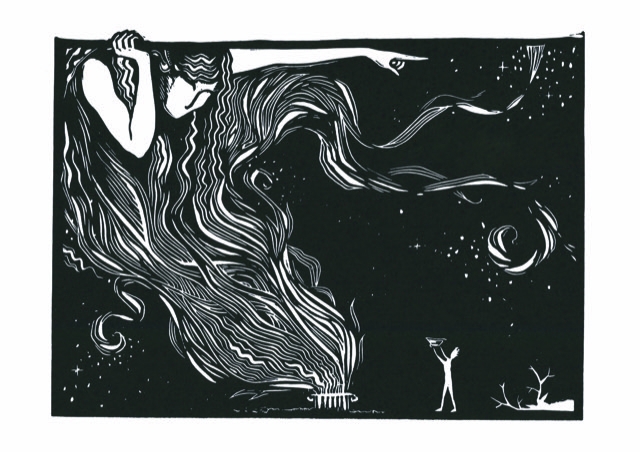Step into Storyland
Amy Jeffs

Amy Jeffs introduces us to Storyland, her new book that explores the myths and lore of Britain. You can hear more from Amy at her event in this year's Wigtown Book Festival. Click here to book your tickets, or here to order your own copy of Storyland.
In Storyland: a New Mythology of Britain, I have sought to retell medieval myths and legends of Britain as if they could be strung together to form one long story: beginning in Africa, before the Flood, and concluding in the reign of William the Bastard. Having done a PhD that focused largely on the medieval origin myth of Britain, I had a hunch this would work out quite well. I didn’t anticipate just how much coherence there would be between the sources. Though I drew on medieval histories, chronicles and Saints’ lives produced in different parts of Britain and Ireland over the course of a thousand years, the later ones often referred to the earlier ones, characters appeared and reappeared, their children’s children waved to me from unexpected places and old monuments were revisited across the ages. Myths and legend might now be dismissed as fantasy, but the stories I have brought together for Storyland were born of an accepted and longstanding history of Britain that dominated well into the sixteenth century. It is little wonder, then, that the tales spun out of it share an internal logic that makes reconstructing that history an eminently satisfying job.
This is not to say I did not have to make things up or infer connections not made explicit in the sources. I have done so many times. But when I have done so, I have sought to tell the reader so in the commentaries that contextualise each chapter. If anyone wants to critique my approach further, my source texts are listed in full at the end of the book. Storyland can therefore be read simply as a collection of illustrated short stories that work together to form one epic, marvel-strewn narrative of settlement, colonisation, invasion and conquest, or it can be read with the commentaries, which turn the book into a history of the part played by myth in the political conflicts that shaped British society in the Middle Ages. Go from there to the primary sources listed at the end and Storyland is an academic primer for the study of medieval historiography. I hope this makes for a book that is both enchanting and useful.
But the first of these – enchantment - was above all the guiding principle for the making of Storyland. It started as a series of linocut illustrations, which I began working on as I completed my PhD. Looking for moments to illustrate in my chosen chronicle – Geoffrey of Monmouth’s 12th-century History of the Kings of Britain – demanded that I find and imagine the most visually arresting moments in the story. Soon my brain was swimming with Trojan exiles, prophesying goddesses, giants tumbling off cliffs and magical children lifting colossal stones. It is therefore my sincere hope that Storyland offers readers a strange view of a familiar landscape, rendering that landscape mysterious, magical and brimming with a thousand wonders.